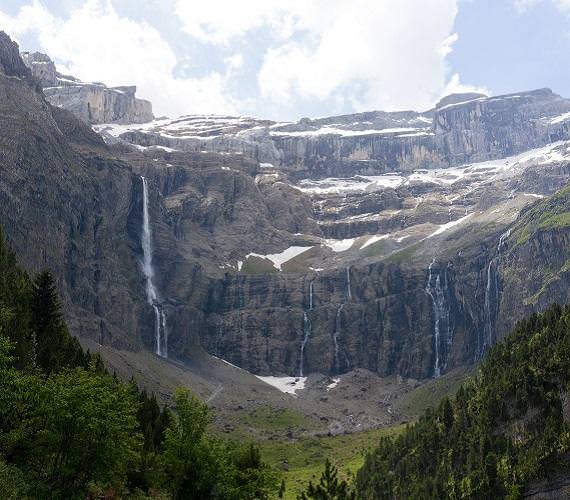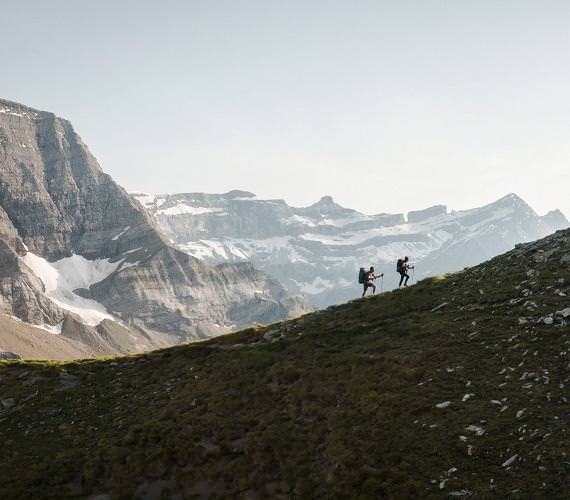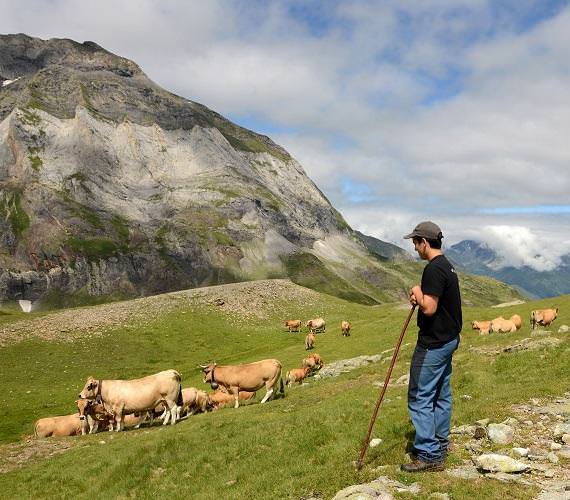
The Cirque de Gavarnie is part of the "Pyrenees - Mont Perdu" complex classified by UNESCO in 1997. It is one of the few sites in the world to have the double classification (natural and cultural).
The “Pyrenees - Mont Perdu” complex merges with the Pyrenees National Park.
From the top of its 3,352 meters, Mont Perdu orchestrates the immense eddies through its mountain range, which straddles the Franco-Spanish border. On one side, it commands the expanse, refreshed by waterfalls and forests, of the majestic Cirques of Gavarnie, Troumouse and Estaubé. On the other, it overlooks the deep, scorching hot canyons of Ordessa, Pineta and Anisclo.
The Gavarnie - Cauterets - Pont d’Espagne complex ranks among the Great Sites of Occitania.

Le cirque de Gavarnie, Atout France - @LittleGypsy / CRT Occitanie
Did you know?
The “Pyrénées - Mont Perdu” complex has been listed since 1997 as a UNESCO World Heritage Site on the basis of natural and cultural criteria. This is an extremely rare fact. Indeed, only a handful of sites in the world benefit from this double distinction, such as Mount Taishan in China and the Sanctuary of Machu Picchu in Peru.
This magnificent Pyrenean territory of more than 30,000 hectares is the only French site to be classified as a World Heritage Site on natural and cultural criteria.
All you have to do is spend a day there to approve the validity of UNESCO's natural criteria. The Cirque de Gavarnie and its surroundings offer a powerful insight into how the Pyrenees were formed. Here: the thrust faults projected up to an altitude of 3,000 meters at the start of the Tertiary period. There: the sheer walls of the Cirque carved out during the Quaternary period by glaciers of unimaginable size.
Its heritage value, protected by the perimeter of the Pyrenees National Park, also lies in its exceptionally rich flora and fauna.

Randonnée au cirque de Gavarnie, Atout France - @LittleGypsy - CRT Occitanie
Don't miss
In the heart of the Pyrenees National Park, Gavarnie is the most famous of the great Pyrenean limestone cirques, but its neighbours should also be visited: the Cirque de Troumouse, the largest of all and the Cirque d’Estaubé, the wildest. Less well known but just as impressive, they are open to everyone, with easy access and
Even more surprising are the cultural criteria that the Gavarnie - Mont Perdu site meets. Since the dawn of time, the Spanish and French communities have shared a pastoral way of life, which remains the basis of their identity. They have developed both economic and spiritual exchanges. From the 12th century, the traditional pastoral agreements have governed uses of the pastoral areas, regulated the free movement of men and herds and preserved peace.
Today this friendship can be seen in the paths, chapels, shelters and mountain huts that dot the mountain. It is experienced in the pastures on the French side that the Aragonese are permitted to use for grazing to compensate for their dry sierras.

Berger et son troupeau au cirque de Gavarnie, Patrice Thébault / CRT Occitanie
Expert's tip
Very close to the Cirque de Gavarnie, Millaris offers a modern and interactive museum area where visitors discover the region of the Pyrenean cirques and all the aspects of their classification as world heritage.

1170x570-gavarnie-rando-torrent_patrice-thebault-crt-occitanie.jpg, Patrice Thébault / CRT Occitanie
When you reach the Village of Gavarnie, you can approach the Cirque in an easy, 45-minute walk. The path runs alongside the Gavarnie torrent and leads to the foot of the Cirque where you will discover the old hotel. The hike can also be undertaken on the back of a horse, a donkey or a pony.
Useful information
To discover Gavarnie and its surroundings, consult the website of the Tourist Agency of the Gavarnie Valleys

How to get there?
Gavarnie is in South-west Occitania in the Hautes-Pyrénées Department. Gavarnie is an hour's drive from Cauterets.
Your itinerary with